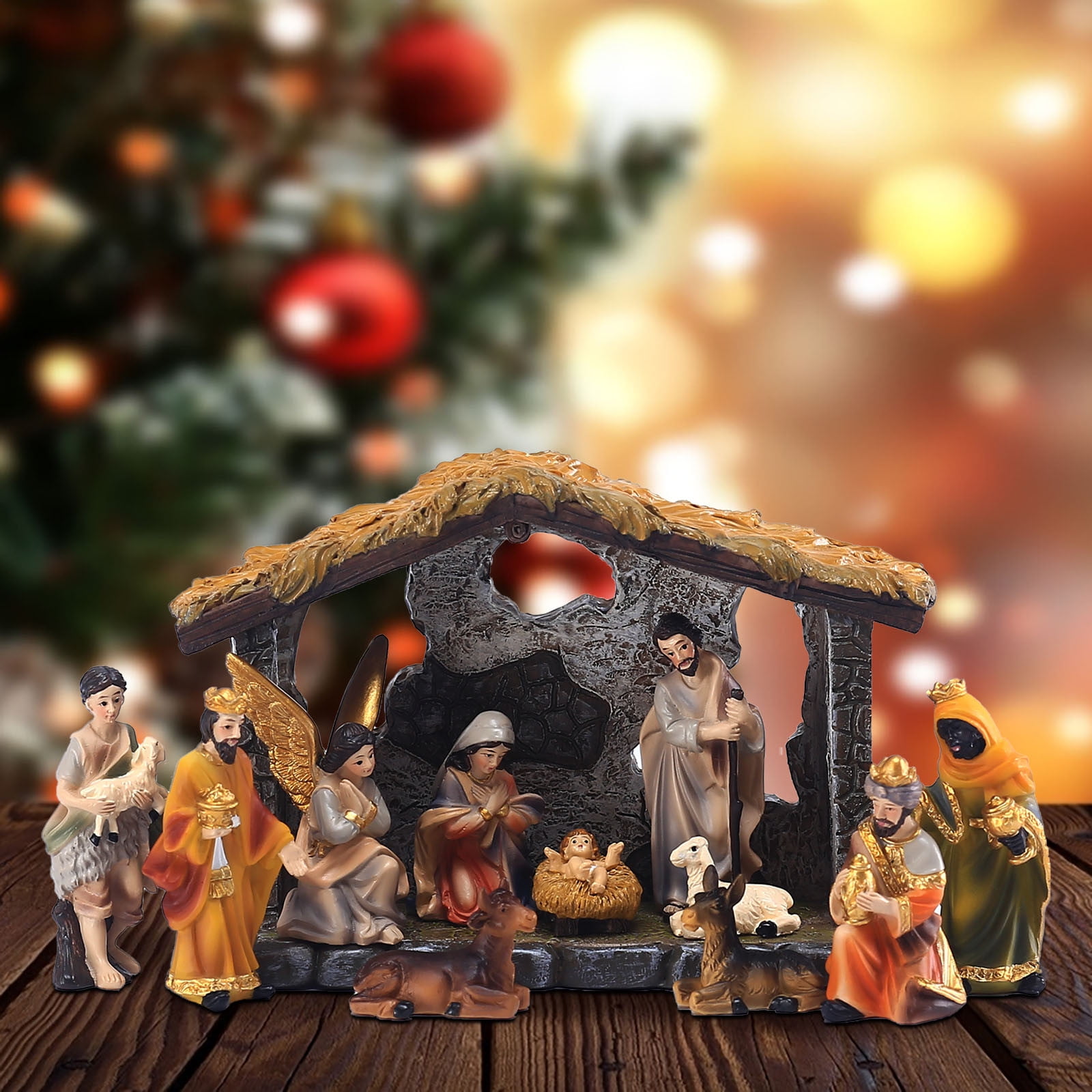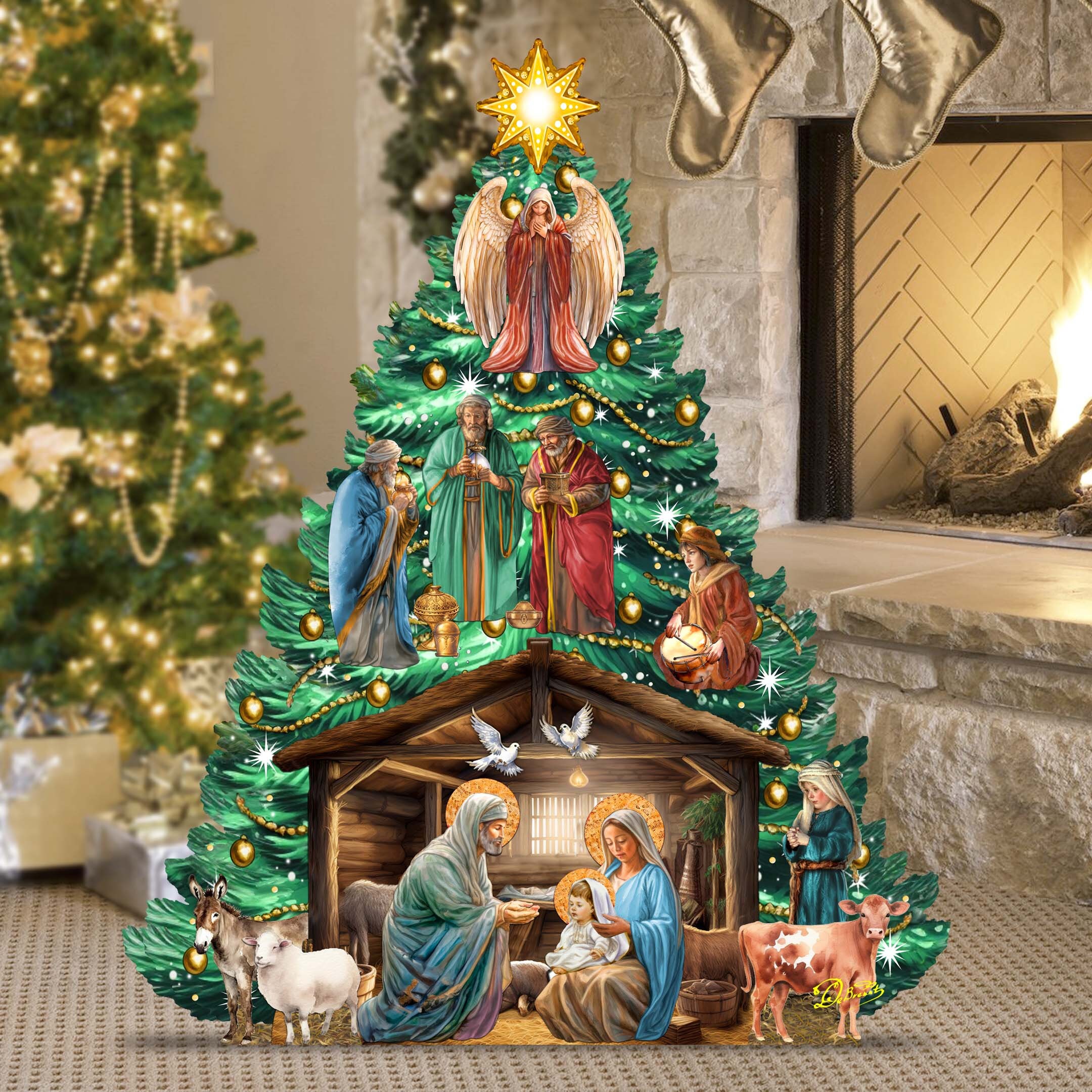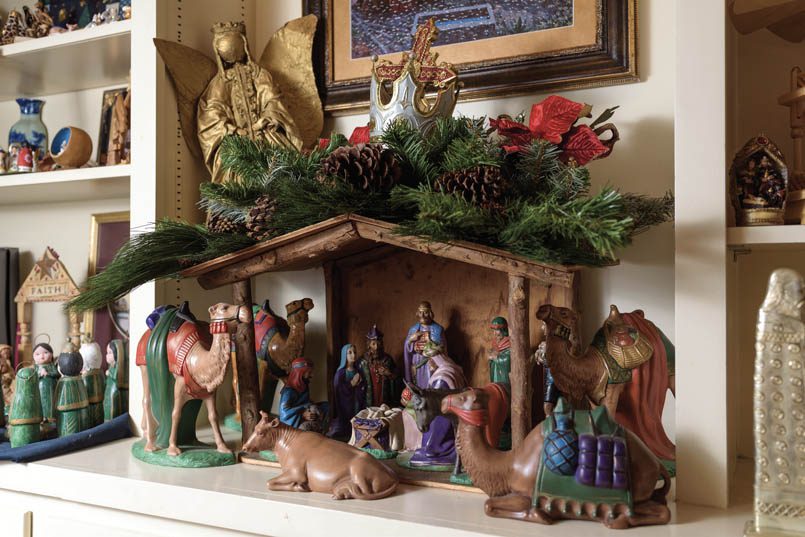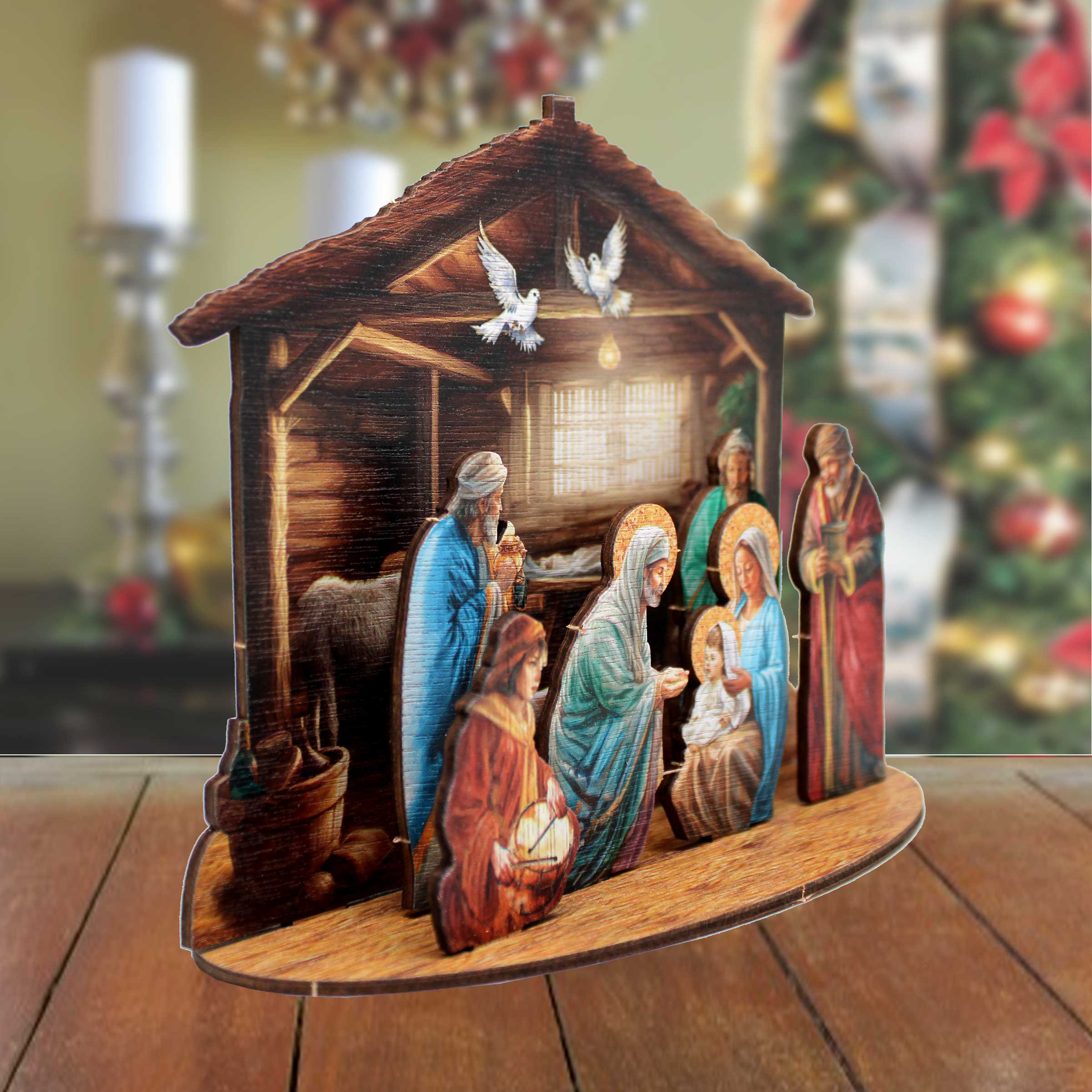As the most wonderful time of the year approaches, one of the most cherished traditions is setting up a nativity scene. This beautiful representation of Jesus’ birth not only adds to your Christmas decor but also reminds us of the true spirit of the holiday season. In this article, we’ll delve into everything you need to know about Christmas decor nativity scenes, including their history, how to choose the right one for your home, DIY ideas, and tips for creating a stunning display. Let’s embark on this heartwarming journey together!
The Significance of Nativity Scenes in Christmas Decor
Nativity scenes, also known as crèches or manger scenes, depict the birth of Jesus Christ and often include key figures such as Mary, Joseph, the baby Jesus, the shepherds, and the Wise Men. These scenes not only enhance the Christmas decor but also serve as a poignant reminder of the religious meaning behind the holiday.
A Brief History of Nativity Scenes
Nativity scenes have a rich history that traces back to the 13th century, when St. Francis of Assisi created the first live nativity scene in Italy. The purpose was to make the story of Christ’s birth more relatable to the common people. Today, nativity scenes come in various styles, sizes, and materials, allowing everyone to participate in this beloved tradition.

Different Types of Nativity Scenes
| Type of Nativity Scene | Description | Pros | Cons |
|---|---|---|---|
| Traditional Set | Includes figurines made of wood, ceramic, or resin. | Traditional and durable. | Can be expensive. |
| Outdoor Nativity | Weather-resistant displays designed for outdoor use. | Visible to the community. | Requires more maintenance. |
| DIY Nativity | Homemade scenes using personal materials. | Unique and customizable. | Time-consuming to create. |
| Children’s Nativity | Crafted from safe, lighter materials for play. | Engaging for kids. | Less detailed than traditional sets. |

Choosing the Right Nativity Scene for Your Home
When it comes to selecting a nativity scene, several factors should guide your choice. Here’s a breakdown of what to consider:

Space and Location
Consider where you want to display your nativity scene. Do you have a dedicated mantelpiece, a dining table, or an outdoor space? The size and style of the scene should complement your chosen area.

Material Preferences
Nativity scenes come in various materials including wood, plastic, resin, and fabric. Wooden ones offer a rustic charm, while plastic sets can be more durable for outdoor displays. Think about what best fits your decor style.

Artistic Style
From realistic to abstract, nativity scenes vary in artistic interpretation. You might prefer a traditional look or a modern twist. Browse different styles to find one that resonates with your aesthetic.

Price Range: What to Expect
Nativity scenes can range from budget-friendly options to more expensive, handcrafted sets. Determine your budget before shopping to narrow down your options. Here’s a quick reference for price points:

| Price Range | Types Available |
|---|---|
| Under $25 | Simple plastic or smaller figurines |
| $25 – $100 | Mid-range wooden or resin sets |
| $100 – $300 | Detailed artisan-crafted scenes |
| Over $300 | Custom-made or limited edition pieces |
DIY Nativity Scene Ideas
If you’re feeling creative, a DIY nativity scene can be a rewarding project that personalizes your decor. Here are some fun ideas to inspire you:
Using Natural Materials
Incorporate elements from nature such as twigs, stones, and moss. This approach not only adds texture but also connects your nativity scene with the beauty of creation.
Fabric Nativity Scene
For a cozy touch, consider sewing or crafting a fabric nativity scene. Use felt or cotton to create soft figures that can be displayed and even played with by children.
Upcycled Nativity Scene
Transform old toys or figurines into nativity characters! It’s a creative way to reuse items and can lead to fascinating results. Think of using LEGO figures, dolls, or even plastic animals.
Step-by-Step Guide to Creating a Simple DIY Nativity Scene
- Gather your materials: wood, fabric, or anything that speaks to you.
- Sketch your design to visualize the layout.
- Construct the stable: Use cardboard or small wooden pieces to create a manger.
- Craft the figures: Personalize the characters using paint or fabric.
- Arrange your scene: Place hay or moss for a natural finish.
Setting Up Your Nativity Scene
Now that you have your nativity scene, it’s time to set it up! Here are some tips to create an inviting display:
Choosing the Right Background
Consider a backdrop that complements your nativity scene. A simple fabric drape or a painted canvas can enhance the visual appeal.
Lighting Matters
Soft lighting can bring magic to your display. Utilize string lights or spotlights to draw attention to key figures like the baby Jesus.
Placement Tips
- Elevate the nativity scene on a pedestal for prominence.
- Incorporate greenery or garlands to frame the scene.
- Ensure the display is in a visible, yet respectful location.
Incorporating Nativity Scenes into Your Holiday Traditions
Nativity scenes can become a focal point in your family’s holiday traditions. Here are some ideas:
Advent Activities
Use the nativity scene to teach children about the story of Jesus’ birth during Advent. Incorporate daily readings or activities leading up to Christmas.
Family Gatherings
Gather your loved ones around the nativity scene to share stories and memories associated with the figures and the Christmas story.
Community Involvement
Consider hosting a nativity scene display in your neighborhood or church. Invite families to create their own unique representations, fostering community spirit and engagement.
Maintenance and Care for Your Nativity Set
To keep your nativity scene looking its best, proper care is essential. Here are some tips:
Cleaning Your Nativity Figures
Dust your figurines regularly. For deeper cleaning, use a damp cloth for soft materials and mild soap for sturdier ones. Avoid harsh chemicals that could damage the finish.
Storage Suggestions
After the holidays, store your nativity scene carefully. Use protective boxes for delicate pieces and keep everything organized for easy assembly next year.
Pros and Cons of Different Materials
| Material | Pros | Cons |
|---|---|---|
| Wood | Durable and classic look. | Heavier and can be costly. |
| Resin | Lightweight and versatile. | Can chip or break upon impact. |
| Fabric | Soft and safe for children. | May not be as visually detailed. |
| Plastic | Highly durable and weather-resistant. | Less authentic look. |
Frequently Asked Questions (FAQs)
What is the best place to buy nativity scenes?
Local craft stores, religious supply stores, and online retailers like Amazon often have a wide selection of nativity scenes to choose from.
How do I choose a nativity scene for children?
Look for sets made from durable, safe materials that can withstand play. Consider smaller figurines that are easier for little hands to manipulate.
How can I make my nativity scene unique?
Incorporate elements from your culture, add personal photos, or create custom characters to reflect your family and community.
What are some tips for setting up an outdoor nativity scene?
Ensure your figures are weather-resistant, secure them against wind, and illuminate them well to draw attention at night.
Conclusion: Embracing the Spirit of Christmas with Nativity Scenes
Setting up a nativity scene is a heartfelt way to celebrate the Christmas season. It invites reflection, inspires creativity, and fosters cherished family traditions. Whether you opt for a traditional set or choose to create your own, remember that the heart of this tradition lies in sharing love, joy, and gratitude during this special time. As you prepare for the holidays, let your nativity scene be a beacon of hope and a reminder of the true meaning of Christmas.